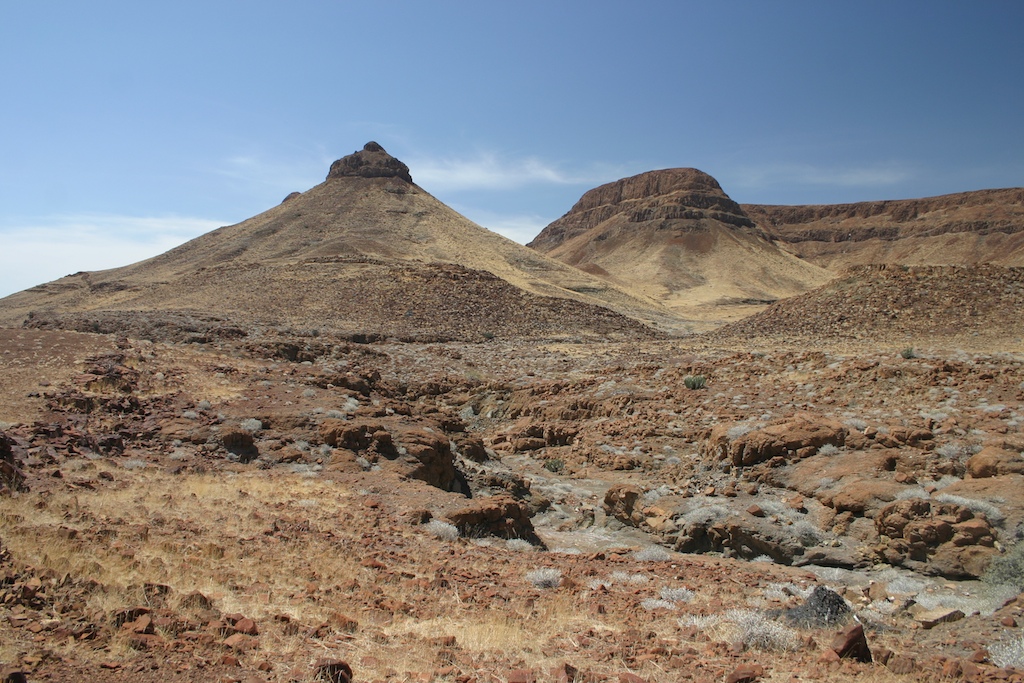pediplain on:
[Wikipedia]
[Google]
[Amazon]

 In
In

 In
In geology
Geology (). is a branch of natural science concerned with the Earth and other astronomical objects, the rocks of which they are composed, and the processes by which they change over time. Modern geology significantly overlaps all other Earth ...
and geomorphology
Geomorphology () is the scientific study of the origin and evolution of topographic and bathymetric features generated by physical, chemical or biological processes operating at or near Earth's surface. Geomorphologists seek to understand wh ...
a pediplain (from the Latin ''pes'', genitive case ''pedis'', meaning "foot") is an extensive plain formed by the coalescence of pediment
Pediments are a form of gable in classical architecture, usually of a triangular shape. Pediments are placed above the horizontal structure of the cornice (an elaborated lintel), or entablature if supported by columns.Summerson, 130 In an ...
s. The processes through which pediplains forms is known as pediplanation. The concepts of pediplain and pediplanation were first developed by geologist Lester Charles King in his 1942 book ''South African Scenery''. The concept gained notoriety as it was juxtaposed to peneplanation.
The coalesced pediments of the pediplains may form a series of very gentle concave slopes. Pediplains main difference to W. M. Davis’ peneplains is in the history and processes behind, and less so in the final shape. Perhaps the most notable difference in form that may be present is that of residual hills which in Davis’ peneplains are to have gentle slopes while in pediplains they ought to have the same steepness as the slopes in the early stages of erosion leading to pediplanation.
Pediplanation is linked to scarp retreat in the following way: as scarps retreat over geological time
The geologic time scale or geological time scale (GTS) is a representation of time based on the rock record of Earth. It is a system of chronological dating that uses chronostratigraphy (the process of relating strata to time) and geochronolo ...
pediments migrate and extend over large areas. The result is that the surface is eroded chiefly backward and that downward erosion is limited. In contrast to common peneplain
In geomorphology and geology, a peneplain is a low-relief plain formed by protracted erosion. This is the definition in the broadest of terms, albeit with frequency the usage of peneplain is meant to imply the representation of a near-final (or ...
conceptualizations several pediplains might form simultaneously at different altitudes and do not necessarily grade to a base level
In geology and geomorphology a base level is the lower limit for the vertical position of an erosion, erosion process. The modern term was introduced by John Wesley Powell in 1875. The term was subsequently appropriated by William Morris Davis wh ...
. Pediplains are normally formed in areas of arid
Aridity is the condition of geographical regions which make up approximately 43% of total global available land area, characterized by low annual precipitation, increased temperatures, and limited water availability.Perez-Aguilar, L. Y., Plata ...
and semi-arid
A semi-arid climate, semi-desert climate, or steppe climate is a aridity, dry climate sub-type. It is located on regions that receive precipitation below Evapotranspiration#Potential evapotranspiration, potential evapotranspiration, but not as l ...
climate. As climate changes arid and semi-arid periods of pediplanation may alternate with more humid periods of etchplanation resulting in the formation of flattish surfaces (peneplains) of mixed origin (polygenetic).
Cryoplanation is a variant of pediplanation that is restricted to cold climates.
Examples
* Atacama Pediplain *South Sudan
South Sudan (), officially the Republic of South Sudan, is a landlocked country in East Africa. It is bordered on the north by Sudan; on the east by Ethiopia; on the south by the Democratic Republic of the Congo, Uganda and Kenya; and on the ...
See also
* * * *Notes
References
Planation surfaces Erosion landforms {{Geo-term-stub